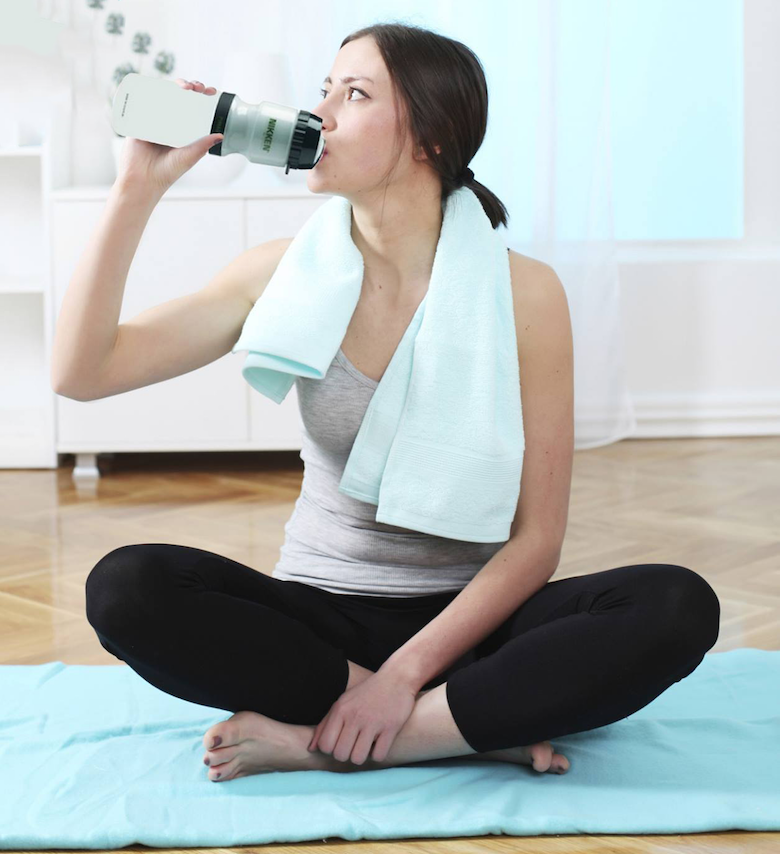Does Cold Weather Affect our Joints?
Some of us experience a nagging discomfort in our joints during rainy days or throughout the winter months. Or, what’s bearable during warmer weather veers out of control when the temperature dives. These physical changes aren’t just part of our imaginations.
Lauren Farrell, M.S.P.T., physical therapist and clinic director of Professional Physical Therapy in New Jersey, says, “While it can happen in any part of the body, this cold-weather achiness is most common in weight-bearing joints, like the knees, hips and ankles. This is especially true for the running population, where they tend to be spending longer periods of time exercising outside in the cold.”1
Although there is scanty research to prove why this happens, experts do have some theories. According to orthopedic surgeon and founder of Manhattan Orthopedic Care, Armin Tehrany, M.D., “The research suggests that in colder weather, the body will conserve heat, and it will send more of the blood to the organs in the center of the body, like the heart or the lungs. So when that happens—the arms, legs, shoulders, knee joints—those blood vessels will constrict. Less blood flow makes those areas colder and stiffer, which can cause discomfort and pain.”2
Another trigger for achy joints is a change in barometric pressure, a measurement that refers to the weight of the surrounding air. Researchers have found that barometric pressure affects pressure inside the joints. The Arthritis Foundation reported that when pressure in the hip joints was equated with atmospheric pressure, it threw the ball of the hip joint about one-third of an inch off track.3
When barometric pressure is high, it pushes against the body from the outside and keeps the tissues from expanding. When it is low, there is less air pressure pushing against the body, allowing the tissues to expand, which puts pressure on the joints. Even though there may seem to be only a small change in pressure, people with sensitive joints can discern a difference, especially those with injuries, chronic inflammation or even scarring of the tissues.
If you are someone who has tender joints or muscles, here are some practical tips to help maintain Active Wellness:
- Dress warmly for the outdoors. Wear layers so you can peel them off when temperatures fluctuate. Layers also help trap in your body’s natural heat. Since heat is often lost from the extremities, wear gloves, socks and a hat.
- When indoors, try to keep your home warm. Use a heating pad on your joints if needed. Heat relaxes muscles and helps ease achiness.
- Soak in warm tubs, if possible. Hot tubs can provide great relief.
- Swimming in a heated pool is one of the best exercises to soothe joints. It’s not weight bearing, yet it provides great cardiovascular exercise.
- Inactivity causes increased stiffness of the joints, so keep physically mobile no matter how the temperature dips. Be sure to warm up to prevent stiffening of the joints and muscles. If you can’t stand being outdoors in the cold, find something to do indoors, whether it’s going to the gym or exercising to a DVD, dancing or using a treadmill or stationary bike at home.
- Stay hydrated. Dehydration increases sensitivity to discomforts, especially in the joints. Hence the saying, “Keep the joints lubricated.” Caffeine and alcohol are dehydrating, so the best thing to drink is water. Using a water with a PH of 8.5 or greater on the go and at home is suggested. The PiMag
Sport Bottle and the
are proven to be greatly benefical.
- Lose weight if you need to. In people with tender joints, especially in the knees, even a few pounds can make a difference. Weight puts a strain on the knees and joints.
- Check your vitamin D levels. Research shows that low levels of vitamin D might increase sensitivity to the discomforts of arthritis. Since you might not get enough vitamin D from sunshine if you tend to stay indoors during cold weather, you may need a supplement such as Kenzen Mega 4 Daily It supplies 100% of the RDA of vitamin D as well as other beneficial vitamins, minerals and vegetable superfoods.
- To give your joints nutritional support, consider Kenzen Joint with its advanced formula of a naturally occurring compound, cetyl myristoleate. This ingredient has natural surfactant and lubricant properties to help in smooth movement.*
- The same ingredient is found in CM Complex Cream . When applied topically, the combination of cetyl myristoleate with peppermint, aloe and menthol, provides a naturally cooling and soothing effect.
For more information on the products mentioned go to www.nikken.com/jsj and click on shop now. We offer information to help you make informed decisions about your wellness.
Grace and peace to you and your family!
jsj


